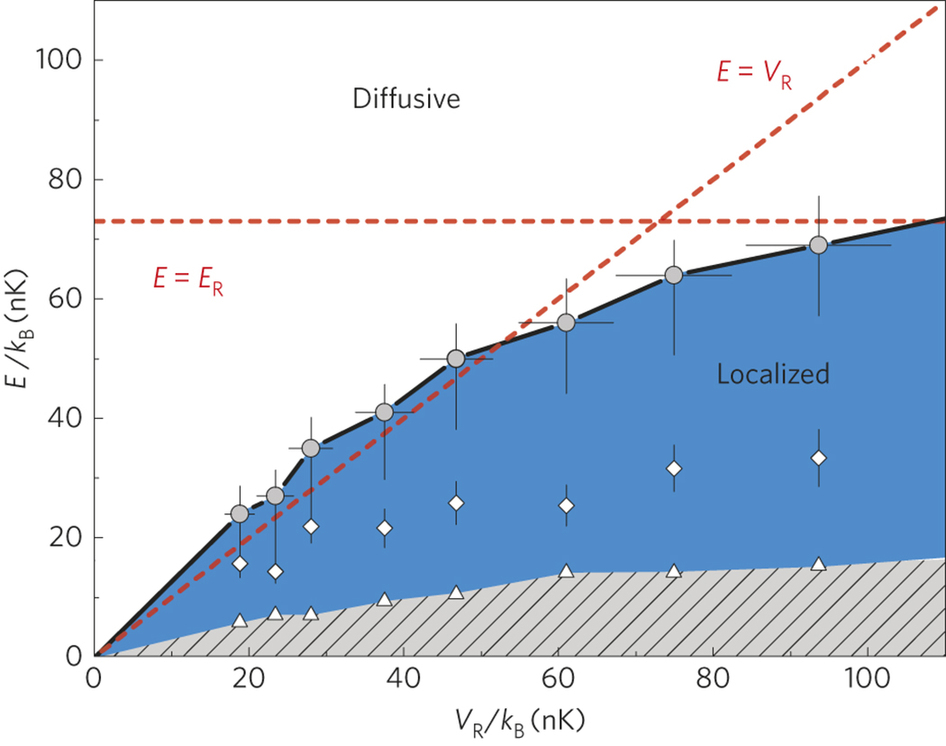 |
Anderson localization is a universal phenomenon affecting non-interacting quantum particles in a disordered environment. In three spatial dimensions, theory predicts a quantum phase transition from localization to diffusion at a critical energy, the mobility edge, which depends on the disorder strength. Although it has been recognized already long ago as a prominent feature of disordered systems, a complete experimental characterization of the mobility edge is still missing. Here we report the measurement of the mobility edge for ultracold atoms in a disordered potential created by laser speckles. We are able to control both the disorder strength and the energy of the system, so as to probe the position of the localization threshold in the disorder–energy plane. Our results might allow a direct experiment–theory comparison, which is a prerequisite to study the even more challenging problem of disorder and interactions. G. Semeghini, et al., |


Pushing the limits of atom interferometry...The system we want to realize is a Mach-Zender spatial interferometer operating with trapped Bose-Einstein condensates (BECs). Phase diffusion caused by interatomic collisions are suppressed implementing BECs with tunable interactions in ultra-stable optical potentials. Entangled states can be used to improve the sensitivity of the sensor beyond the standard quantum limit to ideally reach the ultimate, Heisenberg, limit set by quantum mechanics. Our project aims at developing a sensor with unprecedented spatial resolution able to compete with, and eventually overcome, state-of-the-art interferometers with cold (non condensed) atomic waves.
